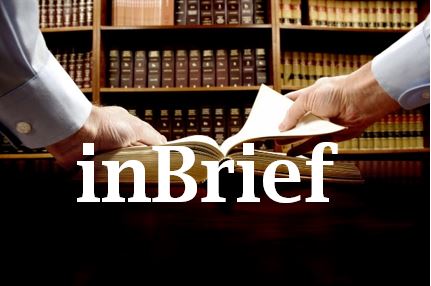The Long-Awaited Implementing Regulations for the Bankruptcy Law
October 2024
Federal Decree-Law No. 51/2023 Promulgating the Financial Reorganisation and Bankruptcy Law (the Bankruptcy Law) introduced a new bankruptcy regime in the UAE, but left a number of key issues to be addressed under later implementing regulations. These regulations have now been issued under Cabinet Decision No. 94/2024 on the Implementing Regulation of the Financial Restructuring and Bankruptcy Law (the Implementing Regulations). The Implementing Regulations supplement the Bankruptcy Law and provide further guidance and clarity on several issues as highlighted below.
Regulatory Authorities
The UAE Central Bank (UAE CB) and the Securities and Commodities Authority (SCA) have been identified as “Supervisory Entities” that will be responsible for implementing the Bankruptcy Law for entities that are subject to their supervision (including banks, financial services providers and insurance companies). Given the key role that these regulated entities (particularly banks and insurance companies) play in the broader economy, it is appropriate that they be treated as a separate category under the Bankruptcy Law and that the Supervisory Entities oversee their bankruptcy proceedings, as they will have the most detailed information regarding their operations and financial condition.
Bankruptcy and Restructuring Register
The Implementing Regulations provide details on the information that will be recorded in the bankruptcy register (as established under the Bankruptcy Law) maintained by the Bankruptcy Unit to record applications submitted and actions taken by the Bankruptcy Court, as well as information about the bankruptcy proceedings, parties and trustees/controllers (the Register). To access information from the Register, an interested party must submit an application to the Bankruptcy Unit, specifying the information requested and the reasons for the application. The application will be subject to the approval of the Minister of Justice (or their representative).
Whilst the ability to access information regarding a bankruptcy application/case provides greater clarity and transparency on the bankruptcy exercise, the fact that such access is limited to interested parties who can demonstrate legitimate reasons for requesting the information (both of which are subject to the Bankruptcy Unit and Minister of Justice’s interpretation and discretion), suggests that such access to the information in the Register will be limited to parties with a direct interest in the bankruptcy action.
Revised Debt Thresholds
Under Federal Decree-Law No. 9/2016 (the Old Law), which was repealed by the Bankruptcy Law:
- a debtor was eligible to file for bankruptcy if the debtor is unable to make payment of debts due to financial difficulty of insolvency for a period of 30 days from the due date; and
- a creditor was eligible to initiate bankruptcy proceedings against a debtor if a debt of at least AED 100,000 was outstanding.
However, the Implementing Regulations have increased the required debt thresholds that the debtor has ceased or will be unable to pay under the Bankruptcy Law, as follows:
- a creditor may initiate bankruptcy proceedings if the value of debts owed by the debtor is at least AED 1 million (or AED 10 million if the debtor is regulated by the UAE CB or SCA);
- a debtor may file for bankruptcy if the value of the debts is at least (a) AED 300,000, if the debtor is a natural person; (b) AED 500,000, if the debtor is a legal entity and (c) AED 5 million, if the debtor is a regulated entity; and
- a secured creditor/mortgagee may initiate restructuring or bankruptcy proceedings if (a) in case of one creditor, the aggregate value of the securities is AED 1 million less than the debts owed; (b) in case of a group of creditors, the aggregate value of the securities is AED 5 million less than the debts owed; and (c) in case of a regulated entity, the aggregate value of the securities is AED 10 million the debts owed.
The increase in the value thresholds for initiating proceedings under the Bankruptcy Law may, in part, have been designed to discourage frivolous actions. However, these changes may also have unintended consequences, in terms of limiting both debtors’ and creditors’ ability to access an orderly winding-up of a bankrupt company, in certain circumstances. For example, under the Old Law, if a company was bankrupt and had no prospect of rescuing its business, it could apply for a debtor led bankruptcy. However, under the Implementing Regulations, this is now only possible if the company has debts of over AED 500,000 (or AED 5 million if the debtor is a regulated entity). Consequently, a company with debts of less than AED 500,000 would not be able to initiate an orderly bankruptcy. Similarly, the threshold for a creditor led bankruptcy of a debtor company has increased tenfold under the Bankruptcy Law.
Bank guarantee required for commencing proceedings
The Implementing Regulations have also revised the amount of money or bank guarantee that an applicant must submit to the Bankruptcy Court treasury in order to cover the costs associated with the initial application review. Under the Old Law, the amount payable by the creditor, either as money or a bank guarantee, was capped at AED 20,000. However, the amount required for debtor-led proceedings, whether in cash or as a bank guarantee, was not specified. The Implementing Regulations now require a debtor or creditor applicant (other than the regulatory authorities) to provide a payment or the bank guarantee representing 5 percent of the debtor’s total debts owed to the creditor or 5 percent of the debtor’s total debts or assets as of the date of the application.
As with the increased thresholds for initiating bankruptcy proceedings discussed above, the changes to the money or bank guarantees (which are now uncapped) may act as a barrier, particularly for small creditors, to accessing proceedings under the Bankruptcy Law. Creditors may find it difficult to deposit the required money or bank guarantee, particularly if their financial position has also deteriorated due to the payment defaults of the debtor company.
Small claims procedures
Although the Bankruptcy Law introduced simplified procedures for “small debtors”, it did not define what constitutes a “small debtor”. The Implementing Regulations identify small debtors as those whose assets value does not exceed (i) AED 1 million, in the case of a natural person, and (ii) AED 2 million, in the case of a legal entity. In such circumstances, the Bankruptcy Court may, on its own motion or pursuant to an application filed by the debtor, the trustee or a creditor, order that preventive settlement, restructuring or bankruptcy proceedings be initiated in accordance with the procedures set out in the Bankruptcy Law.
Approval for actions undertaken by the debtor
The Bankruptcy Law provided that, following the initiation of bankruptcy proceedings, the debtor would require the approval of the trustee in order to undertake certain actions relating to the business and operations of the company under restructuring proceedings. The Implementing Regulations identify these actions as (i) the provision or renewal of guarantees, (ii) paying liquid debts or pre-paying debts, (iii) forming a subsidiary or purchasing shares in another company, (iv) transferring ownership of its property, business, or assets outside the ordinary course of business, and (v) waiving legal claims or enter into financial settlements.
These restrictions ensure that the debtor’s actions do not undermine the restructuring process or negatively impact creditors’ interests during the restructuring proceedings.
Auction of the debtor’s assets
The Implementing Regulations also introduces certain pricing, conditions and procedures relating to the sale of assets of a company in bankruptcy. Prior to the sale of a debtor’s assets by way of an action, the Bankruptcy Court must approve the liquidation and distribution plan. The base price of the assets shall be established by the trustee in accordance with the appraisal conducted by a court-appointed valuation expert. This however does not apply to the sale of securities issued by government bodies, public institutions or joint-stock companies and other financial instruments accepted by the SCA, which shall follow separate market procedures under the supervision and control of the SCA.
Details of the auction must be advertised at least five business days in advance, in both Arabic and English newspapers, as well as on the Bankruptcy Court’s website. Bids will be submitted either in sealed envelopes or electronically, in accordance with the conditions determined by the trustee and the Bankruptcy Court’s approval. If the highest bidder fails to deposit the required payment within five days, the next highest bidder is given the opportunity, and the process repeats if necessary.
Conclusion
Whilst the Implementing Regulations provide valuable clarity and input on key provisions of the Bankruptcy Law, they also further demonstrate that the debtor friendly bankruptcy regime adopted in the UAE (in contrast to the creditor led regimes in most Western jurisdictions). It also reinforces the UAE’s preference for restructuring and corporate recovery, and prescribing bankruptcy only in cases where a corporate rescue is impossible or impractical. This is a welcomed approach.
It remains to be seen exactly how the Bankruptcy Law and Implementing Regulations will be adopted and applied in practice by the Bankruptcy Court, in particular whether the increased value thresholds for initiating proceedings and the uncapped advance money and bank guarantees identified under the Implementing Regulations will undermine the ability to effectively access proceedings under the Bankruptcy Law.
We will continue to monitor developments in the UAE bankruptcy regime. ■
Download inBrief as PDF



